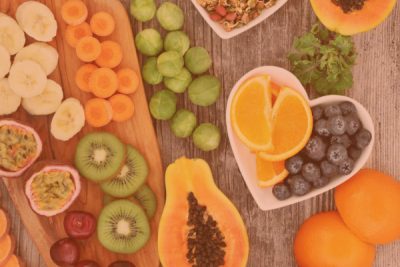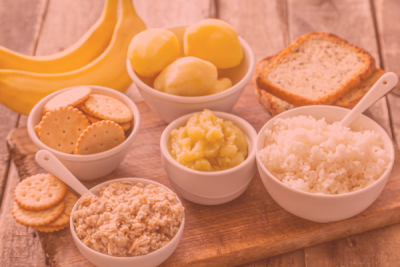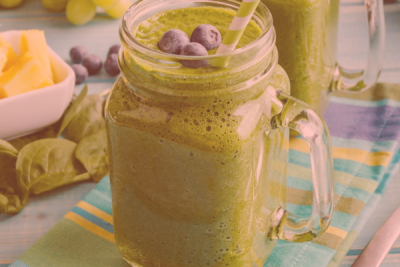Acidity is a common functional gastrointestinal problem that is developed due to excess stomach acid released. Acidity is a widely known phenomenon and is believed to impact millions of people in India. Acidity is characterized by a burning sensation or discomfort in the chest or throat often referred to as heartburn. A lot of times regurgitation of stomach acid is also involved. While occasional acid reflux is normal, chronic acidity can lead to various complications and interfere with daily life. Other symptoms like difficulty in swallowing the food, sour or bitter taste in the mouth can also occur pointing to acidity.
Several factors contribute to the development of acidity, including a poor diet, lifestyle choices, obesity, and certain medical conditions. While antacids and PPIs can provide temporary relief from acidity, it is not a good idea to rely on medicines for life. Fixing other issues like diet, exercise, eating habits and stress management can fix acidity in the long run.
In the following sections, we will explore the trigger foods for acidity and the foods that can help combat it. It is crucial to identify these dietary factors and consult with a nutritionist for personalized advice on managing acidity effectively.
Trigger Foods for Acidity
Indian Foods that can cause acidity:
1. Spicy Foods

Spicy foods, such as chilli peppers and spicy curries, are notorious triggers for acidity. The active compound capsaicin present in chilli peppers can irritate the oesophagus, leading to acid reflux and heartburn. Additionally, spices like black pepper and red chilli powder can stimulate the production of stomach acid, stimulating acidity. Hot spicy stews are also a major cause of acidity.
2. Fried Foods

Fried foods, including deep-fried snacks and oily preparations, are heavy and high in fat content. Fried foods also prevent the lower oesophagal sphincter (LES), a muscle that helps prevent stomach acid from flowing back up, from tightening further contributing to acid reflux. Fried foods take longer to digest, putting additional pressure on the stomach and causing the stomach acid to flow back into the oesophagus. This can result in acid reflux and discomfort.
3. Citrus Fruits

Citrus fruits like oranges, lemons, and grapefruits are acidic in nature. The high acidity levels can irritate the oesophagus and trigger acid reflux in individuals with acidity. Citrus fruits contain high amounts of citric acid. This causes the stomach to produce even more acid leading to discomfort and heartburn. As a result, your stomach is full and the chances for reflux increase
4. Tomato-based Products

The high acidity of tomatoes can worsen acidity, especially when consumed in large quantities or in combination with other trigger foods. Tomato and tomato-based products such as ketchup, salsa, and sauce both have malic and citric acid which makes the stomach produce more acid, which can lead to irritation in the oesophagus.
5. Carbonated Drinks

Carbonated beverages like soda and aerated drinks can contribute to acidity. These drinks contain carbon dioxide, which creates gas in the stomach. The buildup of gas can put pressure on the LES, causing it to weaken and allowing stomach acid to flow back into the oesophagus. Additionally, carbonated drinks are often acidic and can further aggravate acid reflux and heartburn. Several studies have found a strong association between carbonated drinks and acidity
6. Onions and Garlic

Onions and Garlic are pretty much used in almost every curry in India. Both of them enhance the flavour enormously. However, both of them can cause acidity. They can reduce the tightening of the LES thus making way for the stomach acid to travel up leading to acid reflux and discomfort.
7. Caffeinated Beverages

Beverages like coffee, tea, and energy drinks that contain caffeine can stimulate the production of stomach acid and relax the LES. This can lead to increased acid reflux and heartburn symptoms. It’s best to opt for caffeine-free alternatives to reduce the risk of triggering acidity. Having coffee first thing in the morning on an empty stomach is a sure-shot call for acidity.
8. Chocolate

As delicious as it may be, chocolate is a known trigger for acidity. Chocolate is high in fat content, which further contributes to digestive discomfort in individuals with acidity. Chocolate also relaxes the LES making way for the stomach acid to travel up.
9. Alcohol

Alcohol consumption, particularly in excess, can irritate the oesophagus and increase the production of stomach acid. It can also relax the LES, leading to acid reflux and exacerbating acidity. It’s advisable to limit or avoid alcohol to manage GERD effectively.
Foods That Help Combat Acidity
While there are several Indian foods that can trigger acidity, there are also options that can help alleviate discomfort and manage the condition. Here are some Indian foods that are generally well-tolerated by individuals with acidity:
- Yoghurt/Curd/Buttermilk: Yoghurt is a probiotic-rich food that can promote a healthy gut. It contains beneficial bacteria that aid in digestion and can help balance the gut microbiome. Opt for plain, unsweetened yoghurt without added flavours or sugary toppings. One more curd form that is extremely good is buttermilk. You can add cumin powder to the buttermilk to get enhanced benefits.
- Oatmeal: Oatmeal is a nutritious and fiber-rich breakfast option that can help soothe the digestive system. Oats can absorb excess stomach acid and provides a filling and satisfying meal without causing reflux. Opt for plain oatmeal without added sugars or heavy toppings. You can add a banana as a fruit on top of it.
- Ginger: Ginger has long been used as a natural remedy for digestive issues. It possesses anti-inflammatory properties that can help reduce inflammation in the oesophagus and soothe the stomach. It works wonders when it comes to relieving acidity. Incorporate fresh ginger into your meals or drink ginger tea for relief from acidity.
- Papaya: Papaya is a tropical fruit that contains enzymes called papain, which aid in digestion. These enzymes help break down proteins and can ease acidity and indigestion. Enjoy ripe papaya as a snack or incorporate it into smoothies or salads.
- Bananas: Bananas are a gentle and soothing fruit that can help coat the irritated oesophagus and reduce acid reflux symptoms. They are also rich in fiber, which aids in digestion. Opt for ripe bananas for better digestibility. You can pair bananas with oatmeals for great results.
- Fennel: Fennel is another wonderful ingredient when it comes to tackling acidity. Fennel is a herb with natural anti-inflammatory properties that can help soothe the digestive system. Fennel has been there in our Indian diet forever as something to be eaten after food. It can be consumed as fennel seeds or added to dishes as a spice. Fennel tea is also a popular remedy for digestive discomfort.
- Herbal Teas: Herbal teas like chamomile tea and liquorice root tea have soothing properties that can help alleviate acidity. They can help relax the muscles of the digestive tract and provide relief from acid reflux and discomfort. CCF – Coriander, Cumin and Fennel Tea are also great for digestion
- Cucumbers: Cucumbers have a high water content, making them hydrating and cooling for the digestive system. They are low in acid and rich in vitamins and minerals that support digestive health. Cucumbers also provide dietary fiber, which aids in digestion and helps regulate bowel movements, reducing the likelihood of acidity.
Importance of Identifying Trigger Foods
Identification of trigger foods is extremely important. It helps in creating a diet where the trigger foods are eliminated or consumed in moderation along with some healthy foods that tackle acidity. Trigger foods are extremely unique to everyone and while for some meat can be triggering but for others, it could be green vegetables that could cause it. Hence to maintain a healthy diet that does not cause discomfort it is important to know the trigger foods
The Role of a Nutritionist
When it comes to managing acidity and optimizing your diet, seeking the guidance of a nutritionist can be highly beneficial. A nutritionist is a trained professional who can assess your dietary habits, identify trigger foods specific to your condition, and provide personalized dietary recommendations. They can create a tailored meal plan that includes foods to combat acidity while ensuring a balanced and nutritious diet.
A nutritionist can also offer advice on portion sizes, meal timings, and lifestyle modifications that can contribute to better digestion. They stay updated with the latest research and scientific studies on managing acidity, ensuring that their recommendations are evidence-based.
Nutritionist closely monitors the progress, constantly improvise the diet and keep you in check. They provide ongoing support and guidance on your journey to managing acidity.













